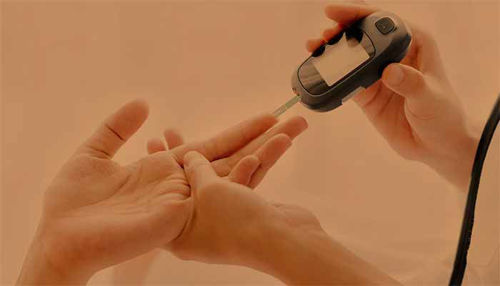Kegel exercises are essential exercises that strengthen the pelvic floor muscles. These exercises are beneficial for both sexes as they help with various problems such as incontinence, improving sexual function, and recovery after childbirth.
BOWLING EXERCISES: General | How to do Kegel exercises | Benefits of Kegel Exercises | What should we watch out for? | Questions and Answers | Sources/references
Kegel exercises are named after Dr. Arnold Kegel, a gynecologist who developed these exercises in the 1940s as a non-invasive method to treat urinary incontinence in women after childbirth. The basis of these exercises is to strengthen the pelvic floor muscles, which support the uterus, bladder, small intestine, and rectum.
Recommendations for the successful implementation of Kegel exercises:
- Consistency: Regular exercise is the key to success. Try to include them in your daily routine.
- Relaxation: Make sure you fully relax your muscles after each squeeze.
- Breathing: breathe normally during the exercises and avoid holding your breath.
- Persistence: Results do not appear overnight. Be patient and persistent when performing the exercises.
Knowing the basic anatomy of the pelvic floor helps us understand how Kegel exercises work. The pelvic floor comprises several muscles and ligaments stretching like a hammock from the pubic bone at the front to the coccyx at the back. These muscles support the pelvic organs and help control the flow of urine and bowel movements.
How does Kegel exercise?
Before starting Kegel exercises, correctly identifying the pelvic floor muscles is essential. One of the most effective methods is stopping urine flow while urinating. The muscles you use are the pelvic floor muscles. Recognizing these muscles will allow you to perform the exercises correctly.
1. Preparation: Lie down or sit in a comfortable position. Ensure that your stomach, thighs, and buttocks muscles are relaxed.
Image: preparation.
.jpg)
2. Squeeze: squeeze your pelvic floor muscles as if you want to stop the urine flow. Hold down for a few seconds.
Image: compression.

3. Relaxation: completely relax your pelvic floor muscles and wait a few seconds before repeating the exercise.
Image: relaxation.
.jpg)
To achieve the best results, it is recommended that Kegel exercises be done every day. Start with a set of 10 compressions three times a day. Gradually increase the time you squeeze and the number of repetitions as your muscles strengthen.
Benefits of Kegel exercises
Kegel exercises are a simple but highly effective method for strengthening the pelvic floor muscles. Whether you are young or old, doing these exercises regularly can benefit your health and well-being.
- Prevention and treatment of urinary incontinence: kegel exercises are very effective in preventing and treating urinary incontinence. Strong pelvic floor muscles help control the bladder and reduce urine leakage, especially during physical activity or coughing.
- Helps with postpartum recovery: Women who regularly do Kegel exercises during pregnancy and after childbirth often have an easier and faster recovery. Exercises help restore the strength of muscles stretched or weakened during childbirth.
- Improving sexual function: kegel exercises can improve sexual function in both sexes. Strong pelvic floor muscles increase the sensitivity and intensity of orgasms and help with erectile function in men.
- Pelvic organ prolapse treatment support: Pelvic organ prolapse is when organs such as the uterus, bladder, or rectum slip out of their normal position. Kegel exercises can help strengthen the supporting muscles and reduce symptoms of prolapse.
With proper technique and consistency, you can improve bladder control, sexual function, and overall quality of life.
What should we watch out for?
One of the most common mistakes people make is squeezing the wrong muscles. People often tense the abdominal muscles, buttocks, or thighs instead of the pelvic floor muscles. Therefore, it is crucial to identify the pelvic floor muscles correctly.
Video content: Dr. Ksenija Šelih Martinec on correctly executing Kegel exercises.

Excessive muscle tension can also cause fatigue and discomfort. It is essential to do the exercises in moderation and gradually increase the intensity. Also, performing Kegel exercises while urinating is not recommended as a regular practice, as this can lead to incomplete bladder emptying and increase the risk of urinary tract infections.
Questions and answers
How many times a day should we do bowling exercises?
Do four sets of 10 repetitions for 40 exercises per day. Try doing them lying down, sitting, standing, or while walking. Your muscles will become fatigued if you do more than 40 reps daily or hold each rep for 10 seconds[1].
Are kegel exercises always successful?
Kegel exercises are widely used and have a 30% to 90% success rate in women with stress incontinence[2].
Can kegel exercises be painful?
Kegel exercises should not be painful. If your stomach, lower back, or head hurts after Kegel exercises, you probably hold your breath or squeeze the wrong muscles. If you have trouble finding your pelvic floor muscles or feel pain and discomfort, you may do the exercises incorrectly[3].
Are kegel exercises also suitable for men?
These exercises can also benefit men. The pelvic floor muscles span the pelvic floor and support the internal pelvic organs, including the bladder, prostate, and rectum in men [1].
Can we do bowling exercises anywhere?
The muscles you tense are the pelvic floor muscles. Once you recognize these muscles, you can do the Kegel exercise anywhere.
Sources and references
1. https://www.mayoclinichealthsystem.org/hometown-health/speaking-of-health/kegels-are-for-men-too
2. https://www.sciencedirect.com/topics/medicine-and-dentistry/kegel-exercise
3. https://my.clevelandclinic.org/health/articles/14611-kegel-exercises
4. https://www.allinahealth.org/health-conditions-and-treatments/health-library/patient-education/beginnings/diet-and-exercise/kegel-exercise









 Facebook
Facebook
 Instagram
Instagram
 info@moja-lekarna.com
info@moja-lekarna.com

